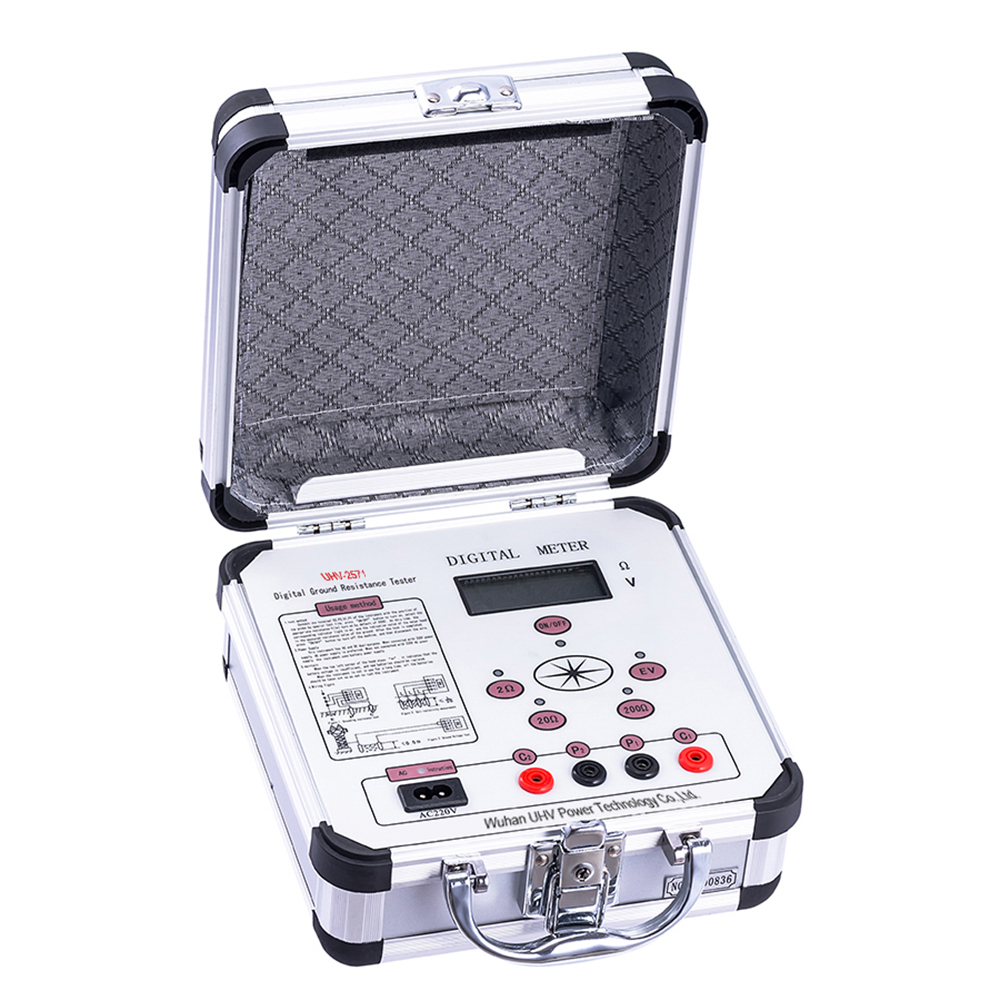The grounding resistance testerunder UHV power can help many power workers conduct various power tests more conveniently.

1. Two line method
Condition: There must be a known grounding, such as PEN, and the measured result must be a known resistance. If it is known that it is much smaller than the measured resistance, the measurement result can be taken as the result of the tested grounding.
Suitable for areas with dense buildings or cement.
Wiring: Connect E+ES and H+S to a known ground.
2. Three line method
Condition: There must be two grounding rods: one auxiliary ground and one detection electrode. The distance between each grounding electrode shall not be less than 20 meters. The principle is to add a current between the auxiliary and measurement, measure the voltage drop between the measured ground and the detection electrode, and the measurement result includes the resistance of the cable itself.
Suitable for: ground grounding, construction site grounding, and lightning ball type lightning rod qPZ grounding.
Wiring: Then measure the S pickup electrode, h connection, E and ES connection.
3. Four line method
Basically, the three wire method measures cable resistance and eliminates the measurement of cable resistance on the measurement results, and E and ES must be directly connected to the measurement. This method has the highest accuracy among all grounding resistance measurements.
4. Single clamp measurement
Condition: Measure the grounding resistance of multiple grounding points without disconnecting to prevent risks.
Suitable for: multiple locations, non disconnectable, measuring the resistance of each grounding point.
Wiring: Monitor the current at the measured location through a current clamp.
5. Double clamp method
Condition: Multiple grounding points, no auxiliary piles, measuring a single ground surface.
Wiring: Use the manufacturer's specified current clamp to connect to the corresponding socket, place two clamps on the grounding conductor, and ensure that the distance between the two clamps is greater than 0.25 meters.
The grounding resistance tester is divided into large-scale networked resistance tester and grounding resistance meter. These two functions, range, etc.
The grounding resistance tester for large grids can meet the measurement needs of ultra large and large-scale conventional grounding grids. It can be used to accurately measure parameters such as grounding impedance, grounding resistance, grounding reactance, field potential gradient, contact voltage, contact potential difference, step voltage, step potential difference, transfer potential, conduction resistance, soil resistivity, and grounding current distribution, which fully meet the requirements of the new version of DL/T475-2006 "Measurement of Grounding Device Characteristic Parameters" depending on the situation.
The grounding resistance meter is suitable for measuring small resistances. The grounding resistance meter abandons the traditional manual full hand working mode and adopts advanced large-scale integrated circuits. It combines DC/AC conversion technology with three terminal and four terminal button measurement, and is a new type of digital grounding resistance tester Suitable for measuring the grounding resistance of various equipment and measuring low resistance conductive resistance values in departments such as power, postal and telecommunications, railways, communications, and mining; It can also measure soil resistivity and grounding voltage. The grounding resistance tester should be stored indoors, keeping the ambient temperature between 0 ℃ and 40 ℃ and the relative humidity not exceeding 80%.



















